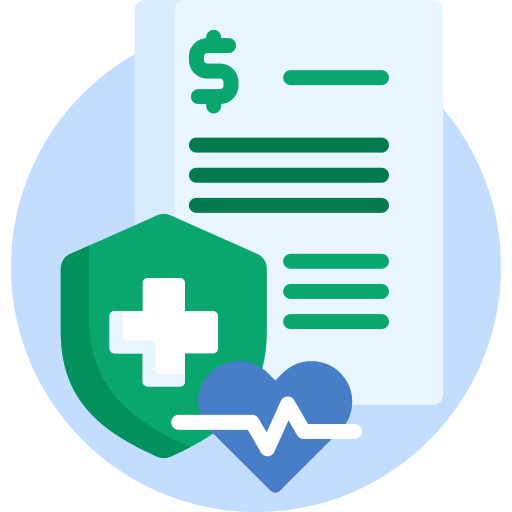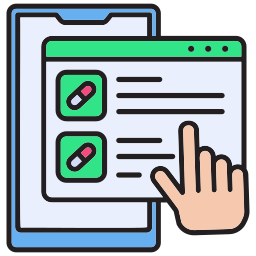Preparing your architecture for FHIR is important for achieving effective healthcare interoperability. A FHIR-ready architecture ensures that healthcare applications can communicate with each other, share data accurately, and maintain the integrity of patient information.
FHIR is a standard framework created by HL7 for exchanging healthcare information electronically. It simplifies the integration of healthcare systems by providing a set of resources and APIs that facilitate data sharing between different healthcare applications.
FHIR's modular approach allows developers to build applications that can work with diverse data sources, promoting interoperability and ensuring patient data is accessible and usable across different platforms and systems.
The preparation involves implementing standardized data formats, secure APIs, and protocols that support efficient data exchange. By adopting a FHIR-ready architecture, healthcare organizations can improve patient care, streamline operations, and comply with regulatory requirements for data sharing and privacy.
Let’s learn more about FHIR-ready architecture:
What is FHIR?
FHIR aims to improve the EHRs by providing a consistent, flexible framework for sharing data between various healthcare systems. FHIR-ready architecture simplifies the integration of various healthcare applications using modern web-based technology, making it easier for developers to create interoperable solutions.
The key components of FHIR include resources, data formats, and APIs. Resources are the fundamental building blocks of FHIR, representing individual pieces of healthcare data such as patients, medications, and diagnoses. Each resource has a standard structure and format, which ensures consistency across different systems.
Data formats in FHIR are designed to be simple and easy to parse, often using JSON or XML. The APIs provided by FHIR allow developers to interact with resources, enabling data retrieval, updates, and searches. These components work together to create a standardized approach to healthcare data exchange.
The benefits of utilizing FHIR for healthcare data exchange are numerous. It makes it easier for disparate EHR systems to communicate with one another, guaranteeing that patient data is consistent and available across several channels. This interoperability improves the accuracy and efficiency of patient care by providing healthcare providers with comprehensive and up-to-date information.
Overall, FHIR enhances the ability of healthcare systems to share and utilize data effectively, leading to better patient outcomes and more efficient healthcare delivery.
Integrating with FHIR is crucial for healthcare providers, as it ensures seamless data exchange and interoperability between different healthcare systems. Let's discuss why we need to integrate with FHIR.
Why Integrate with FHIR?
Integrating with FHIR is crucial for improving data exchange and interoperability in healthcare systems. FHIR provides a standardized framework for sharing health information across different platforms, which simplifies the process of connecting various healthcare applications.
Here are a few points we can consider:
- Crucial for Data Exchange: Integrating with FHIR improves data exchange and interoperability in healthcare systems.
- Standardized Framework: FHIR provides a standardized framework for sharing health information across different platforms.
- Simplifies Connection: Facilitates the connection of various healthcare applications.
- Effective Communication: This ensures systems communicate effectively, leading to accurate and efficient patient data management.
- Eases Integration: Allows healthcare providers to integrate new technologies and solutions without extensive modifications to existing systems.
- Maintains Consistency: Standardization helps in maintaining consistency and compatibility across various software and hardware.
- Faster Data Retrieval: Supports faster and more reliable data retrieval and updates, improving patient care and operational efficiency.
- Aligns with Industry Standards: Aligns systems with current industry standards, facilitating better collaboration and data exchange in the healthcare ecosystem.
5 Steps to Integrate Healthcare Data Architecture with FHIR

1️⃣ Evaluate Your Present Data Architecture
Start by thoroughly assessing your current data architecture to identify existing capabilities and gaps in interoperability. This evaluation helps understand how well your system can support FHIR standards and what modifications might be necessary. Focus on data storage formats and existing integration points to ensure a smooth transition. Recognizing these factors early on will help streamline the subsequent steps in the integration process.
2️⃣Select a Strategy for implementing FHIR
Choosing the right implementation strategy is critical for successful FHIR integration. Options include incremental adoption, where FHIR is gradually incorporated into existing systems, or a full-scale overhaul for immediate compliance. Consider factors such as budget, resources, and the complexity of your current systems. Involving stakeholders in this decision-making process ensures that the chosen strategy aligns with organizational goals and capabilities, facilitating a smoother integration.
3️⃣ Create and Organize Your Data
Prepare your data for FHIR integration to structure it according to FHIR resources and standards. This step includes mapping existing data to FHIR formats, ensuring consistency and accuracy. Organizing data effectively helps reduce errors and enhance interoperability. Additionally, it’s essential to establish data governance protocols to maintain data quality and compliance with FHIR specifications, which is vital for successful integration and ongoing data management.
4️⃣ Create and Evaluate an FHIR Integration
Developing and testing your FHIR integration is crucial for ensuring it functions correctly within your healthcare data architecture. This involves creating APIs that adhere to FHIR standards and conducting rigorous testing to identify and resolve issues. Testing should cover various scenarios to ensure reliability, security, and performance. Engaging with healthcare professionals during this phase can provide valuable feedback, ensuring the integration meets practical needs and improves overall functionality.
5️⃣ Deploy and Track
After successful development and testing, deploy the FHIR integration into your live environment. This phase includes monitoring the integration to ensure it operates smoothly and meets performance expectations. Regular tracking helps identify potential issues early and allows for timely interventions. Additionally, continuous monitoring ensures compliance with evolving FHIR standards and helps maintain data integrity and security, ultimately supporting effective healthcare data management.
Challenges Faced with FHIR Integration in Existing Data Architecture

❗Integration of Legacy Systems
Incorporating FHIR with legacy systems can be challenging due to outdated technologies and incompatible data formats. These older systems often lack the flexibility to support modern standards like FHIR, making integration complex and time-consuming. Retrofitting legacy systems requires extensive modifications, which can be costly and may disrupt existing workflows. Ensuring smooth interoperability between new and old systems demands careful planning and significant technical expertise.
❗Data Mapping and Translation Difficulties
Mapping and translating data to FHIR standards involves converting various data formats into a unified structure. This process can be complex as different systems may use diverse schemas and terminologies. Ensuring accuracy during data mapping is crucial to maintaining data integrity and avoiding information loss. Inconsistent data formats and varying levels of data quality further complicate the translation process, necessitating thorough validation and testing.
❗Privacy and Security Concerns
Ensuring privacy and security during FHIR integration is paramount, as healthcare data is highly sensitive. Implementing FHIR requires robust security measures to protect patient information from breaches and unauthorized access. Compliance with regulations such as HIPAA adds additional layers of complexity. Maintaining data privacy while enabling interoperability involves stringent encryption, access controls, and regular security assessments to protect against potential vulnerabilities.
❗Resource Constraints
Integrating FHIR with existing systems often demands significant resources, including time, money, and skilled personnel. Limited availability of these resources can hinder the integration process, causing delays and potentially compromising the quality of the implementation. Organizations must carefully allocate and manage resources to balance day-to-day operations with the demands of FHIR integration. Efficient resource management ensures a successful and timely transition to FHIR standards.
❗Standardization and Consistency Issues
Achieving standardization and consistency across various healthcare systems is a significant challenge. Different organizations may interpret FHIR standards differently, leading to inconsistencies in data exchange and interoperability. Establishing a common understanding and uniform implementation of FHIR is essential to ensuring seamless data sharing. This requires ongoing collaboration and communication among healthcare providers, developers, and standards organizations.
❗Scalability and Performance Challenges
Integrating FHIR into existing data architectures can strain system scalability and performance. Handling large volumes of healthcare data while maintaining fast response times and efficient processing is crucial. Ensuring that integrated systems can scale to meet growing demands without compromising performance requires careful planning, optimization, and continuous monitoring to address potential bottlenecks and inefficiencies.
❗Regulatory and Compliance Issues
Navigating the complex regulatory and compliance requirements is a major challenge in FHIR integration. Different regions and countries have varying regulations governing healthcare data exchange and interoperability. Organizations must stay informed about evolving regulatory requirements and adapt their systems accordingly to maintain compliance and avoid legal repercussions.
How HealthConnect CoPilot can Help You Build FHIR-ready Solutions?
HealthConnect CoPilot can assist in building FHIR-ready solutions by offering expert guidance, strategic planning, and technical support throughout the integration process. Our team of experienced professionals ensures that your healthcare data architecture aligns with FHIR standards, facilitating smooth interoperability and compliance with industry regulations. From evaluating your current systems to deploying and monitoring the new architecture, we provide end-to-end services to ensure a successful transition to FHIR readiness.
HealthConnect CoPilot is a leading provider of FHIR readiness, a crucial aspect of healthcare interoperability. Their services enable organizations to transition to a FHIR-ready architecture, promoting efficient data exchange, improved patient care, and operational efficiency. This partnership ensures a more connected, interoperable future in healthcare.
- What is FHIR, and why is it important for healthcare architecture?
FHIR (Fast Healthcare Interoperability Resources) is a standard for exchanging healthcare information electronically, promoting interoperability and enabling seamless data sharing across systems.
- What are the initial steps to make my healthcare architecture FHIR-ready?
Start by assessing your current systems, identifying gaps in interoperability, and ensuring your data models align with FHIR standards.
- How long does it typically take to implement FHIR in existing architecture?
The timeline varies depending on system complexity, but it generally involves a phased approach, including planning, development, testing, and deployment.
- What challenges might arise during FHIR implementation, and how can they be addressed?
Common challenges include data mapping, system compatibility, and ensuring security. These can be managed through careful planning, thorough testing, and regular updates.
- Do we need to retrain staff for FHIR implementation?
Yes, training is essential to help your team understand FHIR standards, use new tools, and adapt to changes in workflow to fully leverage FHIR's capabilities.

Pravin Uttarwar, CTO of Mindbowser
As the CTO of Mindbowser, a healthcare-focused software development company, I am dedicated to delivering cutting-edge digital solutions that transform patient care and operational efficiency. With over 16 years of experience and as an MIT alumnus, I specialize in healthcare interoperability, FHIR-compliant systems, and AI-powered platforms, crafting scalable products and architectures tailored to the unique needs of healthcare providers and enterprises.
I have spearheaded the development of over 100 products and platforms, guiding them from concept to full-fledged solutions. My expertise extends to scaling remote tech teams, driving EHR integrations, and building secure, cloud-native healthcare solutions. By shaping technology visions and roadmaps, I help clients achieve long-term growth and success in the rapidly evolving healthcare landscape.
HealthConnect CoPilot enabled us to access real-time patient health data through integration with Apple HealthKit, enhancing care delivery while maintaining HIPAA compliance. This led to personalized care and improved outcomes for patients.

AI-enhanced Obstetrics Clinical Decision Support Platform
HealthConnect CoPilot's integration with Epic's Hyperspace has transformed our workflow. Automated post-delivery examinations and HL7 protocol use ensure accurate updates to Epic. Their expertise empowers informed decision-making in childbirth

Top Provider for Customized Healthcare Solutions
HealthConnect CoPilot's helped us to integrate with leading tracking devices such as Apple Watches and Fitbit. This integration enables effortless syncing of health data, providing users with real-time insights displayed directly on our flagship products: smart mirrors and digital calendars.

A Provider of Customizable Display Solutions



